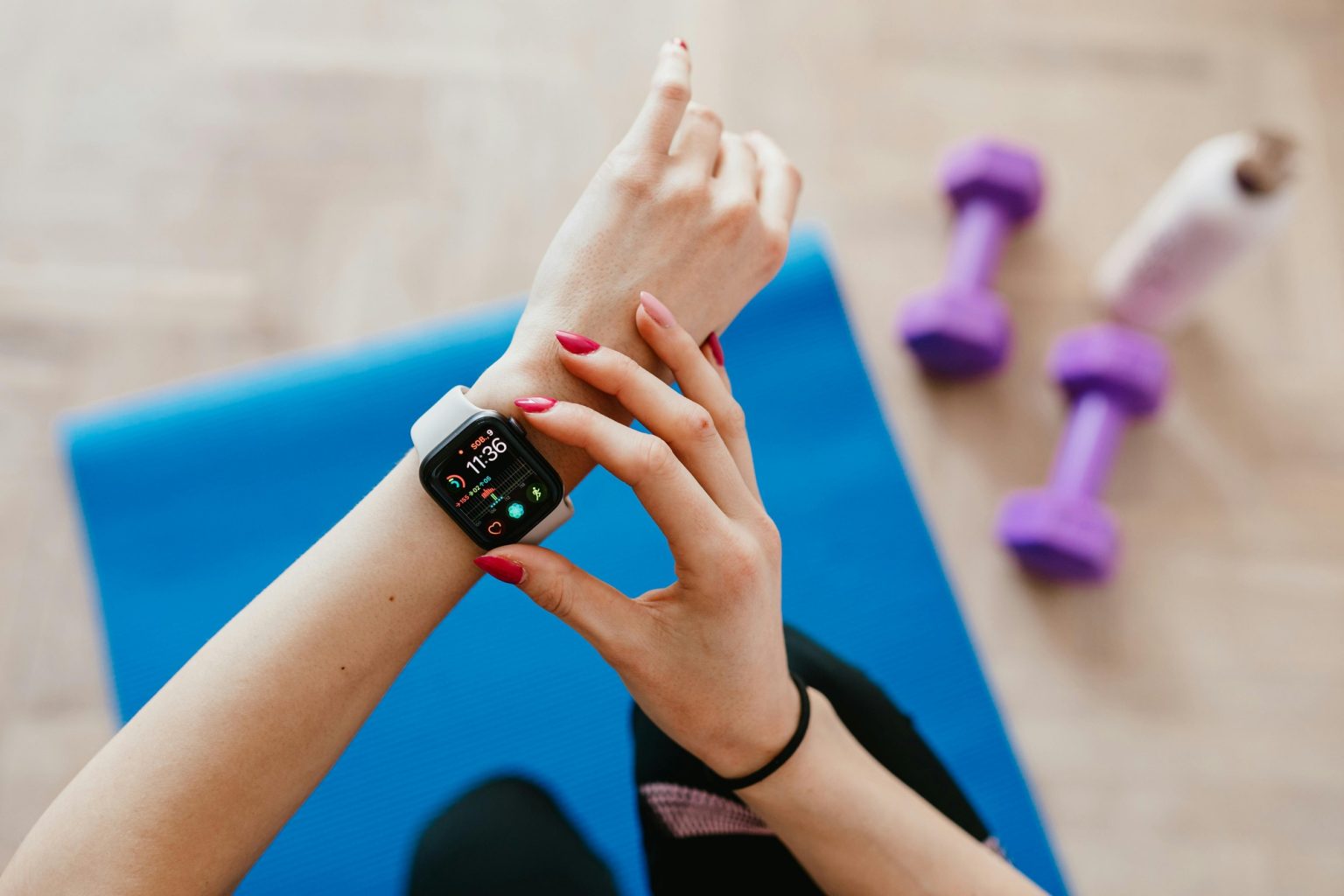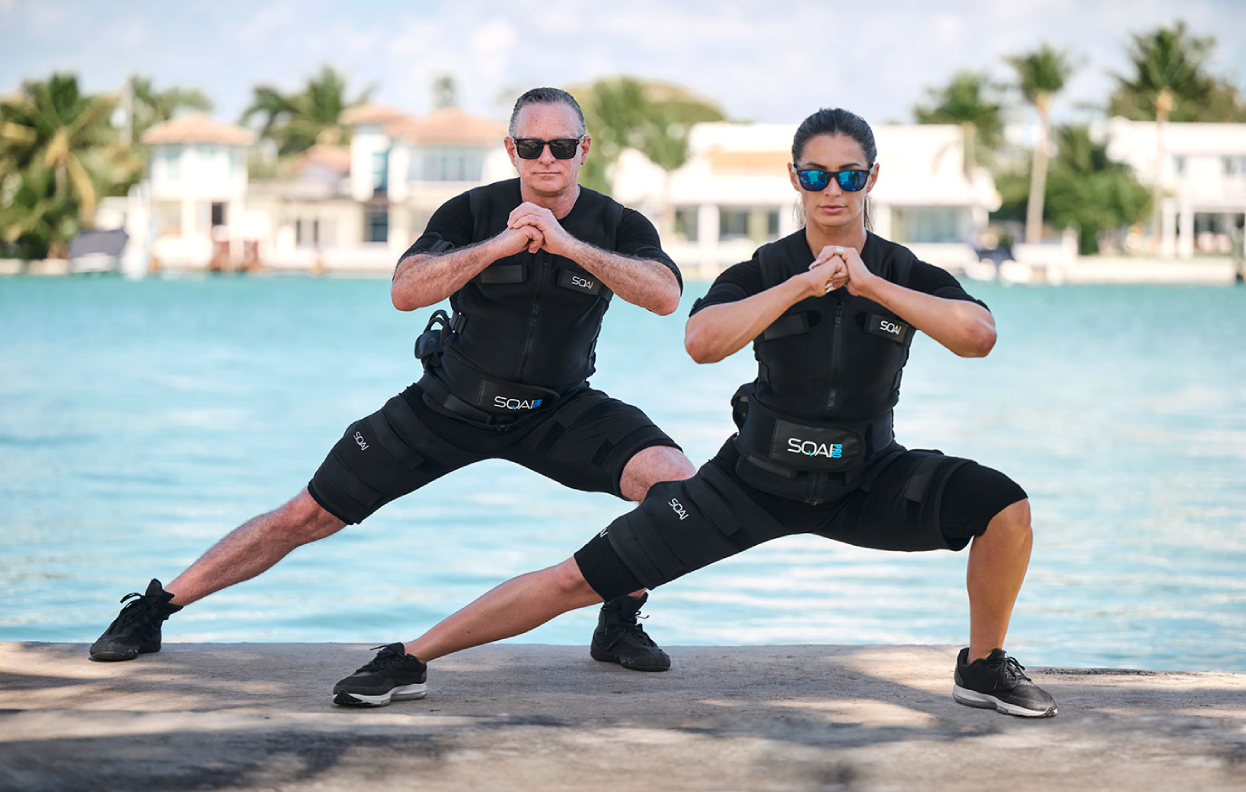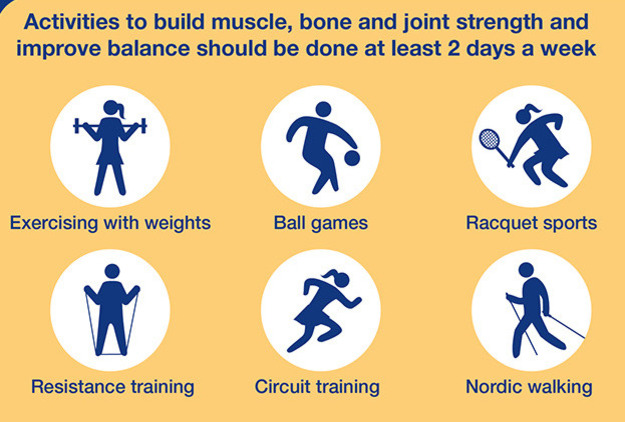EMS (Electro Muscle Stimulation) training is often misunderstood. Many assume it's a "shortcut" to fitness, an effortless workout where you stand still while a machine does all the work. But the reality is completely different. EMS training is intense, highly effective, and capable of delivering rapid results in a fraction of the time required for conventional workouts.
So, is EMS truly the "lazy" way to work out? Let's break down the myths and uncover the truth behind this powerful fitness technology.
What is EMS Training?
EMS training involves wearing a specialized suit fitted with electrodes that send low-frequency electrical impulses to your muscles. These impulses mimic the natural signals sent by your brain, triggering deep muscle contractions far beyond what's achievable in a traditional workout.
While a conventional workout might activate 30-50% of your muscle fibers, EMS training can engage up to 90% simultaneously. This leads to enhanced muscle activation, greater calorie burn, and faster results all within just a 20-minute session.
Why EMS Feels More Intense Than Traditional Workouts
EMS training may look simple on the surface, but those who have tried it know it's far from easy. Here's why:
1. You Work Multiple Muscle Groups at Once
In a typical gym workout, you target specific muscle groups one at a time arms today, legs tomorrow. With EMS, your entire body is engaged simultaneously. Imagine squatting while your core, legs, back, and arms are all contracting at full intensity. Every movement is exponentially harder, leading to faster strength and endurance gains.
2. Deeper Muscle Activation
EMS reaches muscles that traditional workouts often neglect. The electrical impulses penetrate deep muscle fibers, resulting in greater muscle engagement, faster muscle growth, and improved performance. This is why elite athletes and physical therapists incorporate EMS into their training and recovery programs.
3. Amplified Calorie Burn
Because EMS activates a higher percentage of muscle fibers at once, it increases caloric expenditure both during and after your workout. This effect, known as Excess Post-Exercise Oxygen Consumption (EPOC), means your body continues burning calories for hours post-training.
4. Increased Endurance and Strength in Less Time
A 20-minute EMS session can deliver the same results as a 90-minute conventional gym workout. This makes it ideal for busy professionals, athletes, and anyone looking to maximize efficiency without sacrificing effectiveness.

Breaking the Myth: Why EMS Training Isn't "Cheating"
Some skeptics claim that EMS training is a passive or effortless way to exercise. But the truth is:
You actively perform movements (squats, lunges, planks) while the EMS suit enhances contractions.
The constant tension from the electrical impulses makes every move feel exponentially harder.
Even holding a simple squat becomes incredibly challenging due to deep muscle engagement.
Anyone who has completed an EMS session will tell you it's anything but easy. The electrical stimulation ensures your muscles work at maximum capacity, leading to rapid improvements in strength, endurance, and muscle definition.
Who Can Benefit from EMS Training?
EMS training is suitable for a wide range of people, including:
Beginners: Provides an effective introduction to strength training with lower joint strain. Athletes: Enhances performance by targeting deep muscle fibers and improving endurance. Busy professionals: Offers an effective full-body workout in just 20 minutes per session. People recovering from injuries: Helps maintain muscle strength without putting stress on joints. Seniors: Supports muscle maintenance and mobility while being gentle on the body.
Is EMS Safe?
EMS training is completely safe and scientifically backed. The electrical impulses mimic the body's natural signals, ensuring controlled and effective muscle activation. However, individuals with certain medical conditions (such as pacemakers or epilepsy) should consult a physician before trying EMS.
EMS vs. Traditional Workouts: How Do They Compare?
A common question people ask is: How does EMS stack up against conventional strength training? Let's break it down.
| Feature | EMS Training | Traditional Workouts |
|---|---|---|
| Time Required | 20 minutes | 60-90 minutes |
| Muscle Activation | Up to 90% | 30-50% |
| Joint Impact | Low | Medium to High |
| Recovery Time | Faster | Longer |
| Convenience | Can be done anywhere | Usually requires gym |
| Results | Rapid | Gradual |
While both workout styles have their place, EMS is the superior choice if you're short on time but want maximum efficiency and rapid results.
What Does an EMS Workout Feel Like?
If you've never tried EMS, you might be wondering: What does it feel like?
The best way to describe it is a tingling sensation followed by deep muscle contractions. It's similar to the feeling you get after a heavy weightlifting session but amplified. During the workout, as the electrical impulses activate your muscles, even simple bodyweight exercises feel exponentially harder.
Squats feel like lifting heavy weights even when you're not holding any.
Planks become incredibly intense as your core fires on all cylinders.
Push-ups engage deeper muscle fibers, making each rep more challenging.
After the session, you'll feel a deep muscle fatigue the same kind you'd get from an intense strength training workout. And yes, you might be sore the next day!

The Science Behind EMS: How Does It Work?
EMS training is backed by decades of scientific research. But how does it actually work?
The brain naturally sends electrical signals to muscles to make them contract.
EMS mimics these signals, triggering muscle contractions externally.
This forces muscles to work harder, even with minimal movement.
Deep muscle fibers (which are often hard to engage) get fully activated.
Studies show that EMS training enhances muscle strength, endurance, and recovery, making it an effective tool for both fitness and rehabilitation.
Is EMS Only for Athletes?
Absolutely not! While professional athletes and trainers have used EMS for years, it's now accessible to everyone, including:
Beginners looking for a low-impact way to build strength.
Busy professionals who need a time-efficient workout.
Older adults wanting to maintain muscle mass and mobility.
People recovering from injuries and needing gentle muscle stimulation.
EMS is one of the most versatile workout methods available, making it ideal for almost anyone.

Myth vs. Reality: Common Misconceptions About EMS
There are many misconceptions about EMS training. Let's clear them up:
"EMS is cheating." No, it's just a different way to train. EMS enhances muscle contractions but still requires effort.
"You can just stand still, and it works." False! Movement is essential for maximizing EMS benefits. You'll be performing exercises, not just standing around.
"It's dangerous." Not at all! EMS is safe when used correctly under professional supervision.
"You don't get sore from EMS." Oh, you will! EMS causes deep muscle fatigue, just like a traditional strength workout sometimes even more.
EMS for Weight Loss: Can It Help You Burn Fat?
One of the biggest fitness goals people have is losing weight. But can EMS training actually help with fat loss?
The answer is yes but with a twist. EMS alone doesn't burn fat directly, but it supercharges your metabolism in the following ways:
Activates deep muscle fibers, increasing caloric burn.
Boosts afterburn effect (EPOC), meaning your body keeps burning calories for up to 48 hours post-workout.
Increases lean muscle mass, which helps your body burn more fat over time.
Improves circulation and lymphatic drainage, reducing bloating and water retention.
When combined with a balanced diet and regular movement, EMS can accelerate fat loss and help sculpt a leaner physique.
Recovery and Soreness: What to Expect After EMS Training
EMS training is intense, even though the sessions are short. So what happens after?
What to Expect After EMS
Delayed Onset Muscle Soreness (DOMS) – You'll likely feel deep muscle soreness 24–48 hours post-session. This is a good sign it means your muscles are adapting and growing.
Improved Circulation – EMS promotes blood flow, helping muscles recover faster and reducing stiffness.
Increased Flexibility – Many users report looser, more relaxed muscles after EMS, leading to improved mobility.
Faster Recovery for Athletes – EMS has been used for decades in sports therapy to speed up muscle repair.
How to Minimize Soreness
Stay hydrated – EMS causes deep muscle contractions, so your body needs water to recover and flush out toxins.
Stretch post-workout – Light stretching reduces tightness and enhances flexibility.
Use foam rolling – Foam rolling aids circulation and promotes faster muscle repair.

Can EMS Improve Your Posture?
Yes, one of the hidden benefits of EMS is postural correction, which helps combat modern lifestyle issues like prolonged sitting and poor movement habits.
Common Posture Problems EMS Helps With
Slouched shoulders from sitting at a desk all day.
Lower back pain due to a weak core and poor posture.
Muscle imbalances caused by improper movement patterns.
How EMS Improves Posture
Strengthens postural muscles, reducing back pain and supporting spinal health.
Realigns the spine and shoulders, improving posture and balance.
Enhances body awareness, making it easier to maintain a neutral spine throughout the day.
EMS activates deep stabilizing muscles, including the core and lower back, which play a crucial role in posture correction.
EMS for Older Adults: Maintaining Strength and Mobility
As we age, we naturally experience muscle loss (sarcopenia) and decreased mobility. EMS offers a gentle yet powerful solution to maintain strength and independence.
Benefits of EMS for Seniors
Preserves muscle mass without the need for heavy weightlifting.
Improves circulation, helping to reduce stiffness and joint pain.
Enhances balance and coordination, reducing the risk of falls.
Strengthens core muscles, alleviating back pain and improving posture.
Unlike traditional workouts, EMS is low-impact, making it ideal for those with arthritis, joint issues, or limited mobility. It allows seniors to stay active and mobile without putting stress on their joints.
EMS and Athletic Performance: A Secret Weapon for Athletes?
Athletes have been using EMS training for years to enhance strength, endurance, and recovery. Here's why EMS is a game-changer for sports performance:
How EMS Benefits Athletes
Explosive Strength Gains: EMS stimulates fast-twitch muscle fibers, which are crucial for power and speed.
Injury Prevention & Recovery: Helps reduce muscle imbalances, lowering the risk of strains and tears.
Improved Endurance: EMS enhances muscle oxygenation and efficiency, delaying fatigue and improving stamina.
Enhanced Coordination & Mobility: By activating stabilizing muscles, EMS improves movement efficiency in sports.
This is why elite athletes, Olympians, and professional footballers incorporate EMS into their training routines. It helps them train smarter, recover faster, and perform at their peak.

Can You Use EMS at Home?
Absolutely! While professional EMS training delivers outstanding results, there are plenty of effective at-home EMS devices that can help you get fit from the comfort of your living room.
However, not all EMS devices are created equal. Here's what to consider when choosing the right one for you:
Frequency & Intensity Settings: Look for devices that offer customizable intensity levels, similar to professional EMS systems, so you can tailor your workout to your needs.
Muscle Group Targeting: Some devices focus solely on abs, while others, like full-body EMS suits, engage all major muscle groups, giving you a comprehensive workout.
Safety & Quality: Be cautious of budget devices that may skimp on safety features and lack the proper electrical stimulation technology needed for effective and safe training.
With the right device, you can enjoy the benefits of EMS training at home!
Final Verdict: Is EMS Worth It?
If you're looking for: A time-efficient, high-impact workout Increased muscle activation and fat burning A low-impact alternative to traditional strength training Improved recovery, posture, and mobility
Then EMS training is definitely worth trying!

EMS Training is a Game-Changer, Not a Shortcut
While EMS may seem like a futuristic, effortless workout, the reality is far from lazy. It's an intense, time-efficient, and scientifically proven training method that pushes your muscles beyond their normal limits.
If you're ready to experience a smarter, faster way to train, EMS could be exactly what you need. At SQAI, we provide cutting-edge EMS training designed to help you achieve maximum results in minimum time.
So, are you up for the challenge? Try an EMS session and see for yourself this is one workout you won't underestimate again!

